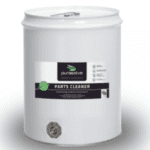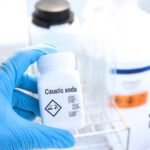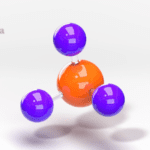In the evolving world of biotechnology, we have reached an impressive level of evaluations and tests that can help us determine the quality of materials. These tests can be broadly divided into four categories: Biodegradation tests, Ecotoxicity tests, Chemical Analysis and Microbial Analysis. The latter two categories have been elaborated on in the previous blog. Let’s further explore biodegradation tests and ecotoxicity tests.
Biodegradation Tests
Biodegradation tests are laboratory methods used to evaluate the ability of a product, material, or chemical ingredient to break down into smaller, non-toxic components in the environment. The following are the types of biodegradation tests that can be commonly performed:
- CO2 evolution test: This measures the production of carbon dioxide as a result of microbial degradation of the substance. Microbial is to relate to or the characteristics of a microorganism, like a bacteria.
- Manometric respirometry test: This test measures the oxygen consumption or carbon dioxide production during biodegradation. The more carbon dioxide produced, the more harmful it is to the environment.
- ISO 14851/ OECD 301 tests: These are standardised tests that evaluate the biodegradability of a substance under controlled laboratory conditions.
- Soil burial test: This test involves burying a sample of the substance in soil and monitoring its degradation over time. Factors such as how the microorganisms in the soil react to the material and the residue of the material once it degrades are also assessed.
- Simulation tests: These tests involve simulating environmental conditions such as temperature, pH, and light to evaluate the biodegradability of a substance. These help understand the most ideal conditions for a particular material to degrade in.
These tests can provide important information about the biodegradability of a substance, such as the rate of degradation, the end-products of degradation, and the impact of the substance on the environment.


Amongst the above mentioned tests there are several universal testing methods that are popularly accepted worldwide for determining the biodegradability of a substance.
- OECD 301 test series: These are a set of standardised tests that evaluate the biodegradability of substances in different environments such as wastewater treatment plants and soil.
- ASTM D5511 test: This test measures the biodegradability of a substance in anaerobic digesters commonly used in wastewater treatment plants.
- ISO 14851 test: This test measures the biodegradability of a substance in aqueous conditions such as surface water and groundwater.
- EC 648/2004 test: This test measures the biodegradability of a substance in a standardised test protocol for plastic materials.
Ecotoxicity Tests
Ecotoxicity tests are laboratory methods used to evaluate the impact of a substance on the environment and living organisms with regards to toxicity. They are relevant in determining the safety, biodegradability, and lack of toxic or allergenic ingredients in a product, ingredient or raw material. The following are some common methods used in ecotoxicity testing:
- Aquatic Toxicity Tests: These tests evaluate the impact of a substance on aquatic organisms, such as fish, crustaceans, and algae. They measure the effect on survival, growth, reproduction, and other biological processes.
- Terrestrial Toxicity Tests: These tests evaluate the impact of a substance on soil-dwelling organisms, such as plants, insects, and microorganisms. They measure the effect on survival, growth, reproduction, and other biological processes.
- Microbial Toxicity Tests: These tests evaluate the impact of a substance on microorganisms, such as bacteria and fungi. They measure the effect on survival, growth, and metabolic activity.
- Bioaccumulation Tests: These tests determine the potential for a substance to accumulate in the tissues of organisms, which can impact their health and the ecosystem.
- Genotoxicity Tests: Genotoxicity is the ability of a substance or physical agent to cause damage to the genetic material (DNA) of an organism, potentially leading to mutations and potentially cancer
Here are some of the commonly used genotoxicity tests that are used across the world:
- In Vitro tests: In Vitro Tests, also known as IVD are tests done on blood samples or tissues that are collected from a human body. It is a very fundamental type of text done to check the toxicity of materials and its impacts on us.
- Ames Test: The Ames Test is a very widely used test done using a bacteria to test whether a certain chemical or material can cause mutations in the DNA of that organism.
- Micronucleus Test: In this test cell cultures are exposed to the test substances and then grown for a sufficient amount of time in order to cultivate and lead to damage in the interphase cells. These harvested interphase cells are then analysed and studied under a microscope for the presence of micronuclei. Micronuclei are essentially small DNA containing structures that are biomarkers of disease.
- Chromosomal Aberration Test: Chromosomal Aberration tests are conducted through ultrasound imaging or blood tests. These tests help recognise and identify agents that cause structural chromosomal defects in cultured and harvested cells. A popular example of this test would be the Bone Marrow Chromosomal Aberration Test.
- Comet Assay: Comet Assay is a simple procedure of measuring deoxyribonucleic acid (DNA) strands in eukaryotic cells. All plants, animals and fungi are made of eukaryotic cells.
- In vivo tests: In vivo test is a blanket term for procedures, experiments or tests performed on a living organism such as a laboratory animal or a human. Clinical trials are an example of in vivo tests performed on human beings.
- Rodent Dominant Lethal Test: Germ cells are introduced in controlled environments of laboratory rodents and the mutations in their DNA is studied after a certain period of time.
- Sister Chromatid Exchange Test: This test measures the ability of a chemical to influence the exchange of DNA amongst two sister chromatids. It studies the impact on DNA replication, a phenomenon that is very vital to the functioning of living organisms.
- Transgenic Mouse Assay: In this test transgenic rats, which contain multiple copies of chromosomal plasmid are used to detect discrepancies when new materials are introduced to their DNA.
These tests help determine if a substance has the potential to cause genetic damage and/or mutations, and are used in various industries, including pharmaceuticals, chemicals, and cosmetics.






















